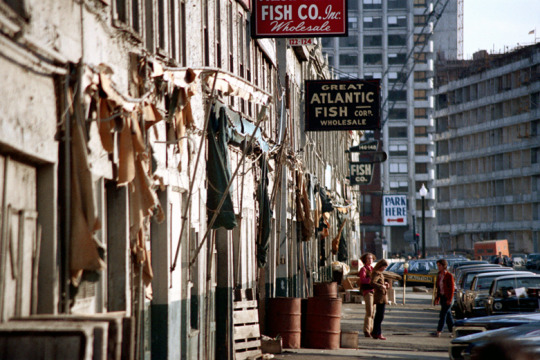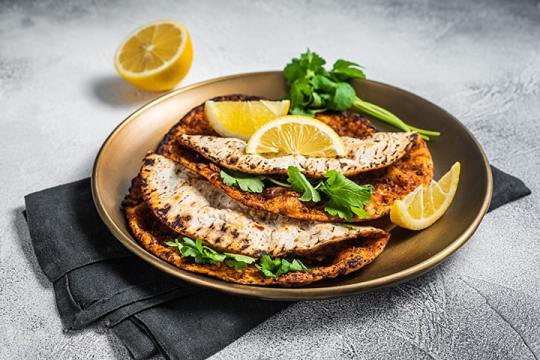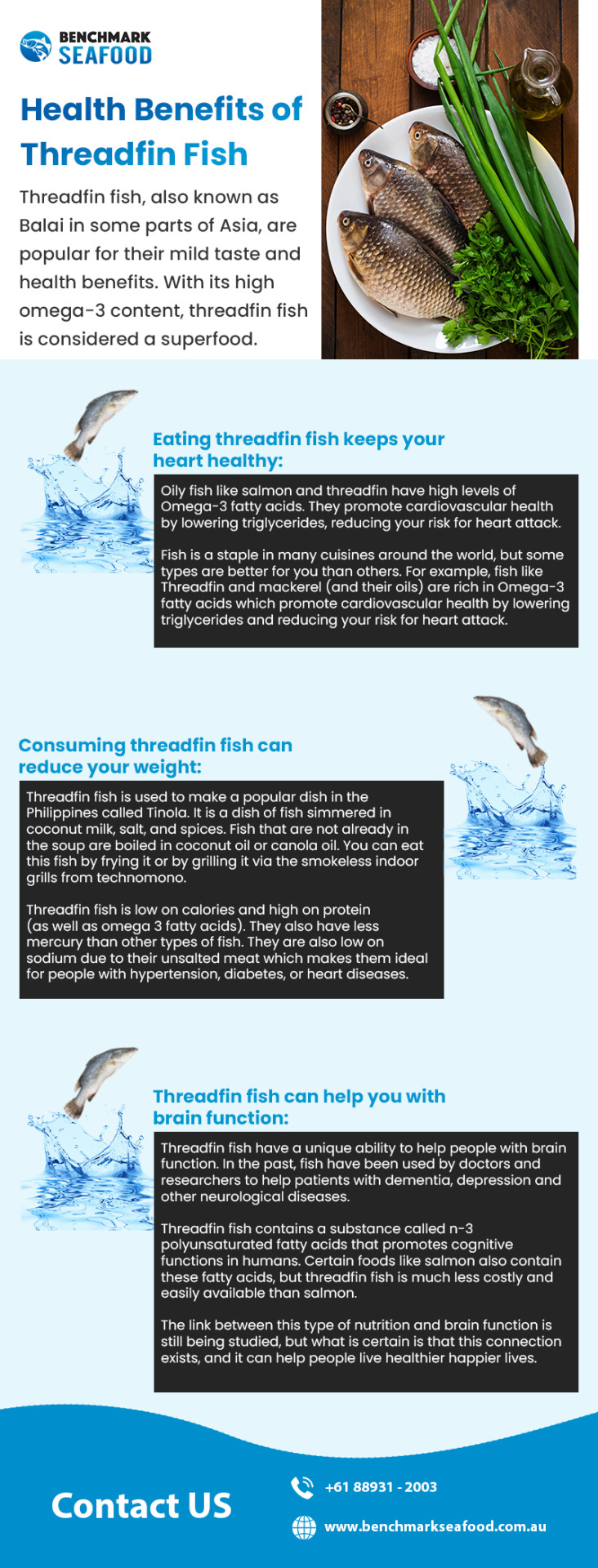#wholesale seafood
Explore tagged Tumblr posts
Text
Why Buying Wholesale Seafood is the Best Choice for Restaurants
As a restaurant owner or chef, the quality of your ingredients is of utmost importance. One of the most important ingredients for any seafood restaurant is, of course, seafood. While it may be tempting to buy seafood from local markets or individual suppliers, buying wholesale seafood is often the best choice. In this article, we'll explore why buying wholesale seafood is the best choice for restaurants.
Introduction to Wholesale Seafood
Wholesale seafood refers to the buying and selling of seafood in bulk. Typically, wholesale seafood suppliers sell seafood to restaurants, grocery stores, and other businesses in large quantities. These suppliers are often able to offer lower prices and higher quality seafood than individual suppliers or local markets.
Benefits of Buying Wholesale Seafood
There are several benefits to buying wholesale seafood for restaurants:
Lower Prices: Wholesale seafood suppliers are often able to offer lower prices than individual suppliers or local markets. This is because they are able to purchase seafood in bulk, which reduces the overall cost per unit.
Higher Quality: Wholesale seafood suppliers are typically more focused on quality than individual suppliers or local markets. This is because their business relies on maintaining a reputation for high-quality seafood. Wholesale seafood suppliers also have access to the freshest seafood, as they often have direct relationships with fishermen and processors.
Greater Variety: Wholesale seafood suppliers often offer a greater variety of seafood than individual suppliers or local markets. This is because they are able to purchase seafood from different regions and countries.
Convenient Delivery: Wholesale seafood suppliers typically offer convenient delivery options, which can save restaurants time and money.
How to Find a Reliable Wholesale Seafood Supplier
Finding a reliable wholesale seafood supplier is essential for any restaurant. Here are a few tips to help you find a reputable supplier:
Research: Do your research and read reviews of potential suppliers. Look for suppliers with a reputation for quality and reliability.
Visit the Supplier: If possible, visit the supplier in person to see the quality of their products and meet their team.
Ask Questions: Don't be afraid to ask questions about the supplier's products, processes, and certifications.
Sample Products: Ask the supplier for samples of their products before making a large order.
Conclusion
Buying wholesale seafood is often the best choice for restaurants. Wholesale seafood suppliers are able to offer lower prices, higher quality seafood, a greater variety of products, and convenient delivery options. When looking for a reliable wholesale seafood supplier, be sure to do your research, visit the supplier in person, ask questions, and sample their products. With the right supplier, your restaurant can offer the highest quality seafood to your customers.
0 notes
Text

boston, massachusetts 1971
atlantic avenue
photograph by nick dewolf https://www.flickr.com/photos/dboo/5576651723
#photography#film#color#35mm#boston#massachusetts#streetphotography#atlanticavenue#buildings#storefronts#signs#people#cars#fish#seafood#wholesale#1970s
37 notes
·
View notes
Text
Frozen Fish Supplier in India
FoodsMantra is one of the best frozen fish supplier in India. We offer high-quality frozen fish products such as shrimp, cuttlefish, squid, octopus, and various fish species for domestic and international customers. As a reliable frozen seafood supplier, wholesaler and distributor in India, We have established a strong global presence and are known for their high-quality products. We act as a frozen fish wholesaler and distributor between producers and buyers.
2 notes
·
View notes
Text

Reasons to Buy Frozen Seafood
Freezing is a natural preservation method that doesn't necessitate preservatives usage. When it comes to fish and seafood, freezing can yield premium quality throughout the year. It also enables you to use the exact amount you need, reducing waste. Moreover, frozen fish and seafood can be up to 25% more economical than fresh ones.
#wholesale fish market near me#fish wholesale#buy fresh oysters#fresh fish delivery near me#seafood wholesalers uk#fresh seafood delivery#seafood#freshfish#fishmarketinlondon#seafooddelivery#seafoodshop#freshfishdelivered#fishmarketliverpool#fishsuppliesnearme#seafoodwholesale#freshfishdeliveries#fishonlineuk#onlinefishdelivery#fishsuppliers#liverpoolfishmarket#fishsuppliersliverpoolfishmarket
2 notes
·
View notes
Text

Squid Tubes
Squid tubes (1kg), a premium seafood product from New Zealand. Visit: https://tasmanstarseafoodmarket.com.au/ for more
#Best fish market Gold Coast#Wholesale Fish Market Gold Coast#Fresh fish market gold coast#Wholesale seafood Gold Coast prices#Best seafood Market Gold Coast
0 notes
Text
The Ultimate Guide to Finding the Best Dried Fruit Suppliers

Dried fruits have gained immense popularity due to their long shelf life, rich nutritional value, and versatile usage in various cuisines and industries. Whether you own a retail business, a food manufacturing company, or an e-commerce store, partnering with the right dried fruit supplier is crucial for maintaining quality and customer satisfaction. This comprehensive guide explores the top factors to consider when choosing a dried fruit supplier and highlights some of the best sources globally.
Why Choose a Trusted Dried Fruit Supplier?
Partnering with a reputable supplier ensures that you receive high-quality products that meet industry standards. The right supplier should offer:
Superior Product Quality – Fresh, organic, and free from harmful preservatives.
Competitive Wholesale Pricing – Ensuring affordability and profitability.
Wide Product Selection – From classic options like raisins and apricots to exotic varieties such as acai berries and mulberries.
Sustainable Sourcing – Ethical and environmentally friendly farming practices.
Reliable Shipping & Logistics – Secure packaging and timely deliveries worldwide.
Key Factors to Consider When Selecting a Dried Fruit Supplier
1. Quality Assurance and Certifications
Always verify that the supplier holds internationally recognized certifications such as HACCP, USDA Organic, ISO, or GMP. These certifications indicate that the supplier follows stringent quality and safety protocols.
2. Product Variety and Availability
A good supplier should offer a diverse range of dried fruits, including conventional, organic, and freeze-dried options. Seasonal availability should also be considered.
3. Competitive Pricing and Minimum Order Quantity (MOQ)
Compare different suppliers’ pricing structures and MOQs to find one that aligns with your business needs. Bulk discounts and flexible ordering options are key advantages.
4. Shipping, Logistics, and Packaging
A reliable supplier ensures proper packaging to preserve the quality of dried fruits during transit. Look for suppliers with efficient shipping networks and global distribution capabilities.
5. Customer Reviews and Industry Reputation
Research customer feedback and reviews on platforms like Alibaba, Global Sources, and Trustpilot. Positive testimonials and a strong market reputation indicate a trustworthy supplier.
How to Find the Best Dried Fruit Supplier for Your Business
Attend International Trade Fairs – Events like Gulfood, SIAL, and ANUGA provide networking opportunities with top suppliers.
Use B2B Marketplaces – Platforms like Alibaba, Global Sources, and Made-in-China list verified dried fruit supplier.
Check Supplier Certifications – Ensure compliance with food safety and organic standards.
Request Samples – Testing product quality before bulk purchases minimizes risks.
Negotiate Terms – Discuss pricing, shipping, and return policies for a seamless partnership.
Final Thoughts
Choosing the right dried fruit supplier is a game-changer for businesses looking to deliver premium-quality products. By considering factors such as product quality, certification, and supplier reliability, you can build strong business relationships and ensure consistent supply.
0 notes
Text

The Expanding Oysters Market in Australia: Key Buyers
The worldwide demand for oysters, along with Australia's distinctive geographical features and an increasing awareness of their health benefits, propels the industry ahead. Both distributors and retailers stand to gain from a diverse selection of oyster species, the integration of sustainable practices, and the embrace of creative marketing strategies. The sector appears ready for an encouraging future, characterized by an emphasis on consumer behaviors, advancements in technology, and initiatives for sustainability. The choice of the Oysters Market in Australia holds substantial importance in this scenario.
0 notes
Text

Looking for Cheap Fresh Fish Suppliers Bahrain? D'Ocean Fisheries, located in Manama, offers affordable and high-quality fresh fish and seafood products to meet your needs. Enjoy premium seafood at great prices!
📍 Manama, Kingdom of Bahrain 📞 +973 13382888 | +973 13392999 | +973 39482888 📧 [email protected] 🌐 Visit Our Website
#CheapFreshFishSuppliersBahrain #AffordableSeafoodBahrain #DOceanFisheries
#CheapFreshFishSuppliersBahrain#AffordableSeafoodBahrain#DOceanFisheries#Buy Sea Food Products Online#Fresh seafood suppliers in Bahrain#Frozen seafood suppliers in Bahrain#Seafood suppliers near me#Seafood wholesalers near me#Frozen Seafood Supplier#Fresh Fish Suppliers Bahrain#Cheap Fresh Fish Suppliers Bahrain#Buy frozen smoked salmon in Bahrain online#Fresh shrimp supplier in Bahrain#Fresh Salmon Supplier in Bahrain
0 notes
Text
Premium Turbot Seafood Online - QUINLAN
Enjoy the highest quality turbot seafood from QUINLAN. Sustainably sourced and packed with flavor, our premium turbot will elevate your dishes. Shop our selection of fresh turbot seafood now!
#Fresh turbot fish#Sustainable turbot#Turbot NL#Buy turbot#Turbot Canada#Premium turbot seafood#Wild-caught turbot#Turbot fish suppliers#Turbot wholesale
0 notes
Text
Who is the Best Wholesale Dry Goods Suppliers in Sydney?

Sydney, the bustling metropolis of Australia, is a hub of diverse businesses catering to a wide range of needs. Among these businesses, wholesale dry goods suppliers play a crucial role in supplying essential products to retailers, restaurants, and other businesses. However, with so many options available, finding the best wholesale dry goods suppliers in Sydney can be a daunting task. In this guide, we will explore the key factors to consider when choosing a supplier and highlight some of the top wholesale dry goods suppliers in Sydney.
Factors to Consider When Choosing a Wholesale Dry Goods Supplier
Product Range: The first factor to consider is the range of products offered by the supplier. Look for a supplier that offers a wide variety of dry goods, including grains, pulses, spices, and other essential items. A diverse product range ensures that you can find everything you need from a single supplier, saving you time and effort.
Quality of Products: Quality is paramount when it comes to dry goods. Look for suppliers that offer high-quality products that meet industry standards. This includes products that are fresh, free from contaminants, and packaged properly to ensure freshness and safety.
Reliability and Reputation: Choose a supplier that is known for their reliability and reputation in the industry. Look for suppliers with a proven track record of delivering quality products on time and meeting their commitments to customers.
Price and Terms: Price is, of course, a crucial factor when choosing a wholesale supplier. However, it's essential to consider the overall value offered by the supplier, including their terms of sale, payment terms, and any discounts or incentives they may offer.
Customer Service: A supplier's customer service can make a significant difference in your experience as a customer. Look for suppliers that are responsive to your inquiries, provide timely updates on orders, and are willing to go the extra mile to meet your needs.
Location and Delivery: Consider the location of the supplier and their delivery options. Choosing a supplier that is located close to your business can reduce shipping costs and delivery times, making it more convenient for you to receive your orders.
Top Wholesale Dry Goods Suppliers in Sydney
Sydney Freezers: At Sydney Freezers, we offer an extensive selection of food products across various categories. Whether you’re looking for small goods, fresh meat, poultry, frozen seafood, dry and frozen goods, packaging, or chemicals, we have you covered. With just one phone call, we can fulfill all your food service requirements.
The Source Bulk Foods: The Source Bulk Foods is a popular choice for those looking for organic and sustainable dry goods. They offer a wide range of products, including grains, nuts, seeds, and spices, all sourced from ethical suppliers.
Bulk Whole Foods: Bulk Whole Foods is another well-known supplier of wholesale dry goods in Sydney. They offer a comprehensive range of products at competitive prices, making them a popular choice among retailers and businesses.
Royal Nut Company: Royal Nut Company is a family-owned business that has been operating for over 30 years. They offer a wide range of high-quality nuts, dried fruits, and other dry goods, making them a trusted supplier in the industry.
The Nut Market: The Nut Market is a supplier of premium quality nuts, dried fruits, and other dry goods. They are known for their high-quality products and excellent customer service, making them a top choice for many businesses in Sydney.
Conclusion
Finding the best wholesale dry goods supplier in Sydney requires careful consideration of factors such as product range, quality, reliability, and customer service. By choosing a supplier that meets your needs and offers value for money, you can ensure a smooth and successful partnership that benefits your business in the long run. Consider exploring the mentioned suppliers to find the one that aligns with your requirements and enjoy the benefits of a reliable and efficient supply chain for your dry goods needs in Sydney.
0 notes
Text
#SurmaiFishdistributorship#BlackPomfretFishwholesaledealer#RohuFishdealers#PrawnsFishdistributorswanted#findBombayDuckdistributors#TopFrozenTunaFishDistributors#Seafoodsdistributorswanted#Seafoods#Distributors#Wholesaledistributorship#India#Distributorship#Dealers#AppointDistributors#GetDistributors#Manufacturers#Suppliers#Wholesalers#Traders#Dealership
0 notes
Text

Health Benefits of Threadfin Salmon Fish in Darwin | Easy Guide
Are you looking for health benefits of threadin salmon fish? if yes then look at our infographic. In this infographic we have mentioned the some key points which you should need to know. We are the best seafood suppliers in Darwin. If you want to buy fresh fish in Australia then visit our store and call us at:- +61889312003.
0 notes
Text
In the fast-paced urban landscape of Singapore, the concept of online grocery shopping has evolved into a pivotal aspect of modern convenience. Amid this evolution, KIM MART emerges as a trailblazing solution, revolutionizing the way Singaporeans shop for their daily essentials. Let's delve into how KIM MART has become the quintessential companion for online grocery shopping in Singapore.
#online grocery shopping singapore#bbq supplier singapore#finger food supplier singapore#frozen seafood supplier singapore#wholesale food supplier singapore
0 notes
Text
The Role of Cold Warehousing in the Frozen Food Supply Chain
When you reach into your freezer and pull out that perfectly preserved bag of frozen vegetables or a pint of your favorite ice cream, have you ever wondered about the journey that product took to reach your home? The frozen food supply chain is a complex network that relies heavily on cold warehousing, and its role in ensuring the safety and quality of frozen foods cannot be overstated.
1. Temperature Control: The Bedrock of Frozen Food Preservation
The heart of cold warehousing lies in its ability to maintain precise temperature control. Frozen foods, as the name suggests, need to be kept at sub-zero temperatures to remain safe for consumption and retain their quality. Cold storage facilities are equipped with advanced refrigeration systems and monitoring tools that ensure temperatures are consistently maintained, preventing any thawing that could lead to spoilage.
2. Extending Shelf Life
Cold warehousing is the key to extending the shelf life of frozen foods. It slows down the growth of harmful microorganisms and enzymes, effectively "pausing" the food's deterioration process. This allows frozen food manufacturers and distributors to stockpile products, reducing food waste and ensuring a consistent supply to meet consumer demand.
3. Safe Transit
In the frozen food supply chain, products move through various stages, including manufacturing, distribution, and retail. At each step, maintaining the cold chain is crucial to prevent thawing and maintain the safety and quality of products. Cold warehousing acts as a bridge, ensuring that products remain frozen while transitioning between different stages of the supply chain.
4. Seasonal Flexibility
One of the remarkable benefits of cold warehousing is its ability to offer seasonal flexibility. Seafood processing often has seasonal fluctuations, especially in the case of fruits and vegetables. Cold storage facilities allow producers to freeze excess seasonal produce, preserving it for later use when it's out of season, thus reducing food shortages and price fluctuations.
5. Reducing Food Loss
Food loss and waste are significant global challenges, and the frozen food supply chain plays a role in addressing this issue. Cold warehousing helps reduce food loss by extending the shelf life of products. When food can be stored for longer periods without spoilage, there's less pressure to sell or dispose of it quickly, leading to less food waste.
6. Quality Assurance
Quality is a paramount concern for both consumers and food manufacturers. Cold storage refrigerated warehouse is equipped with advanced quality control measures, such as temperature monitoring, inventory tracking, and inspection protocols, to ensure that products meet the highest standards of safety and quality.
7. Meeting Consumer Expectations
Consumers have come to expect a wide variety of frozen food options, from frozen fruits and vegetables to fully prepared meals. Cold warehousing makes it possible for manufacturers to offer this diverse range of products, meeting consumer preferences for convenience and variety.
In conclusion, cold warehousing plays a pivotal role in the frozen food supply chain. It ensures that frozen foods remain safe, high-quality, and readily available to consumers year-round. From temperature control to reducing food waste and meeting consumer demands, the contributions of cold storage facilities are essential to the success of the frozen food industry.
At Cold Locker, we understand the critical role of cold warehousing in the frozen food supply chain. Our state-of-the-art facilities and commitment to quality and safety make us a trusted partner for businesses in the food industry. If you have any questions or would like to learn more about our cold warehousing services, please don't hesitate to get in touch.
---
Disclaimer: This blog post is for informational purposes only and should not be considered as professional advice. Please consult with experts in your industry for specific guidance.
#refrigerated warehouse#seafood wholesaler#seafood processing#fish processing companies#Cold Storage#Safe Seafood storage#Cooler and Refrigerated Delivery
1 note
·
View note
Text

Global Trade Plaza knows the specific needs of the seafood industry. Our platform gives you access to a wide network of sincere buyers and sellers from across the world, opening the door to a world of opportunities.
Register with us and get: 1. Exceptional Variety and Quality 2. Seamless Transactions 3. Business Growth Opportunities 4. Effective Global Reach
Join us today for free!! https://globaltradeplaza.com/signup
#b2bmarketing#b2b#portal#marketplace#business#marketing#ecommerce#wholesale#digitalmarketing#branding#ads#seafood#food#supplies
0 notes
Text
Tasman Star Seafood Market, Fish Friday
youtube
Fish Friday here at tasman star seafood market, with fresh deliverys arriving every day. Visit: https://tasmanstarseafoodmarket.com.au/
#Best fish market Gold Coast#Wholesale Fish Market Gold Coast#Fresh fish market gold coast#Wholesale seafood Gold Coast prices#Best seafood Market Gold Coast#Youtube
0 notes